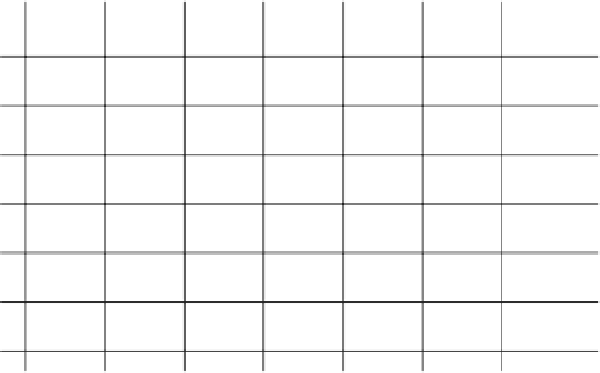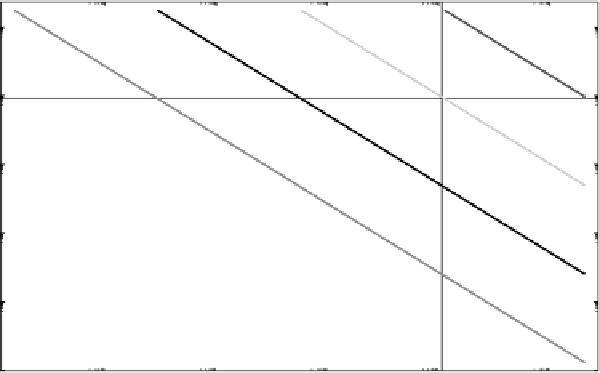Cryptography Reference
In-Depth Information
0.01
g
=
120
g
=
90
g
=
60
g
=
30
1.
×
10
−
9
1.
×
10
−
16
1.
×
10
−
23
1.
×
10
−
30
1.
×
10
−
37
1.
×
10
−
30
1.
×
10
−
23
1.
×
10
−
16
1.
×
10
−
9
0.01
Mutual
Information
Upper
Bound
Figure 7.2
Failure probability versus secrecy bound for various privacy amplification
compressions.
from Equation (7.31) that in the case of the PPA bound,
g
PPA
and
g
become
the same only when
g
=
0, which corresponds to an upper bound on the fail-
ure probability of 100%. (In other words, there is no guarantee that privacy
amplification is successful.) This is clearly cryptographically useless!
This example emphasizes the importance of assuring a sufficiently small
failure probability in addition to a sufficiently small upper bound on the mu-
tual information. As we see from the above example, the APA result provides
no information about the correct number of subtraction bits that are required
in order to achieve a specified upper bound on the pointwise mutual infor-
mation with a suitable failure probability, for which it is essential to use the
PPA result instead. In Figure 7.2 we have plotted the failure probability as a
function of the upper bound on the mutual information, for a family of choices
of
g
PPA
values. Returning to the example discussed above for the APA bound,
we see that if we need to achieve an upper bound on
I
of about 10
−
9
, we may
do so with a failure probability of about (coincidentally) 10
−
9
, at the cost of
shortening the final key by 60 bits: the secrecy is dictated by the pointwise
bound parameter value of
g
=
30, which is effected by choosing
g
PPA
=
60,
10
−
9
. Smaller upper bounds can obviously be obtained,
with suitable values of the failure probability, at the cost of further shortening
of the key.
In Figure 7.3 we plot the throughput of secret Vernam cipher material in
bits per second, as a function of bit cell period, for the two bit subtraction
amounts
g
PPA
=
corresponding to
P
f
60. The example chosen is a representative sce-
nario for applied quantum cryptography. In calculating the rate we follow
30 and
g
PPA
=











